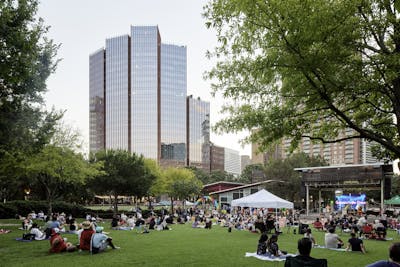
Lilly Biotechnology Center
Utilizing advanced digital modeling to bring a complex design to life
Project Facts
| Location | San Diego, California |
| Size | 13,000 SF |
Overview
When Eli Lilly decided to orchestrate an expansion of their biotechnology center, they turned to an architect for an innovative design representative of the science housed in its walls. The development was significant, more than doubling the space, and included a technologically advanced laboratory design. The showcase piece was the wavy screen entrance representing the organic structure of DNA. While genuinely innovative, the plan was complex and expensive. Lilly turned to Walter P Moore to use their advanced model creation to take the intricate design and make it economical.
Services
About the Project
When Eli Lilly, a major pharmaceutical company, decided to enhance the entrance of their traditional four-story suburban office building, the architect conceived a wavy screen wall with hundreds of elements to represent the organic patterns of DNA structure. Walter P Moore’s enclosure engineering specialists stepped in to make it a reality. The client loved the geometric intricacies but wanted to avoid the excessive construction costs and detailing problems that too often accompany complicated structures.
To address the geometric complexity of the numerous curving surfaces, Walter P Moore collaborated with the architect and the metal fabricator to develop the screen wall as a collection of vertical metal fins, each individually rotated and precisely configured. The fins are supported on a frame of curved horizontal steel rails attached to V-shaped columns, further simplifying the underlying support structure.
To design and detail the non-linear structure, Walter P Moore created a high-fidelity, connected digital model of all elements. This model allowed the development of accurate analyses and details while seamlessly incorporating dimensional changes to the complex structure demanded by the relocation of the screen wall on the site.
Even though the relocation occurred after permit documents were issued, the project proceeded without interruption and was completed on schedule.











